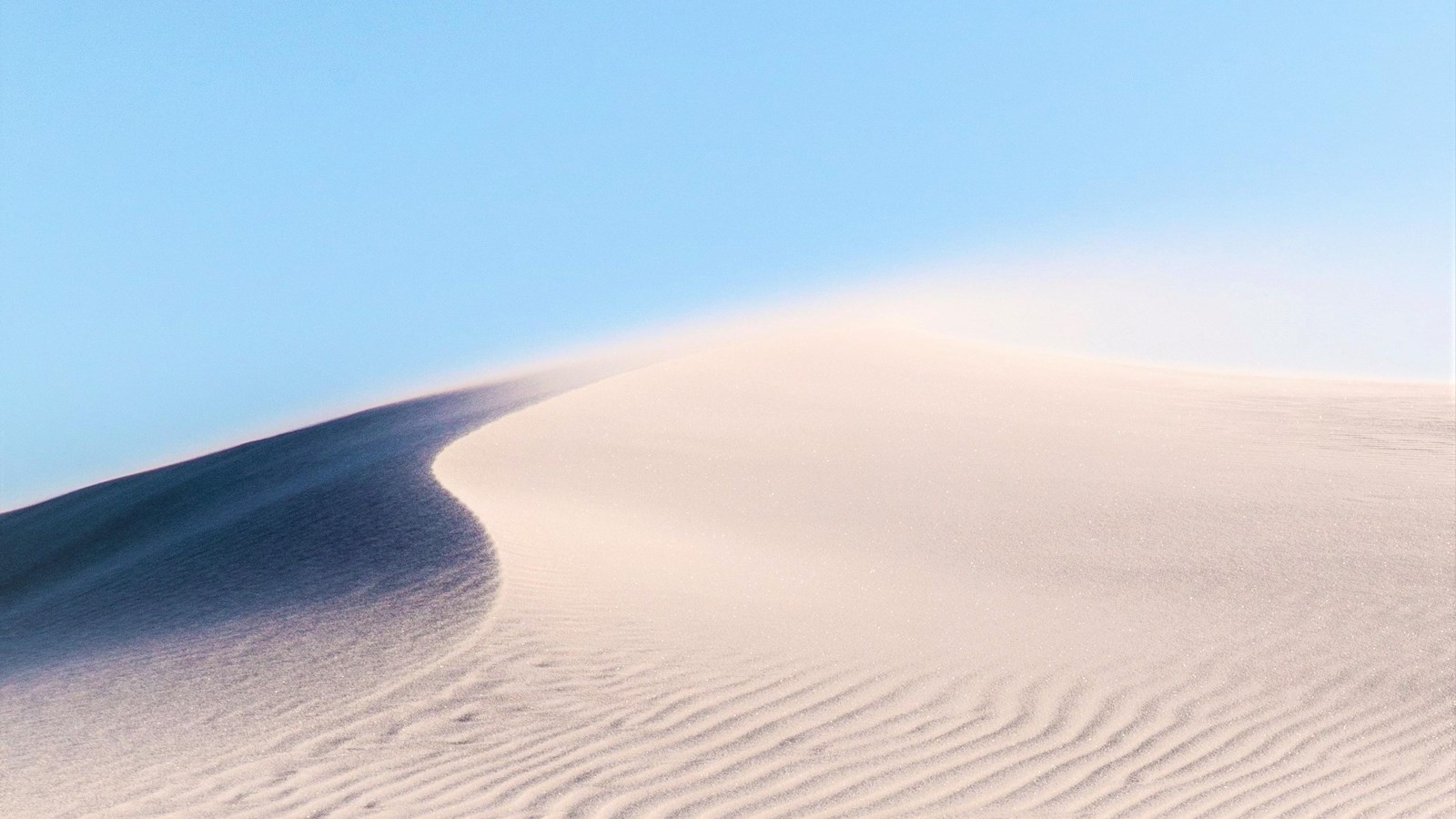Last updated: October 10, 2024
Place
Gone with the Wind

NPS Photo
Quick Facts
Amenities
3 listed
Historical/Interpretive Information/Exhibits, Parking - Auto, Parking - Bus/RV
As you gaze out your window you should see the sign “Gone With the Wind,” and beyond that sparse vegetation, and pure white dunes. How far do you think you can see? On most days you can see for miles, including the surrounding mountain ranges. Now I want you to imagine those mountains becoming obscured. A windstorm has picked up. You can feel it beating against the side of your car. It’s howling all around you. As the wind increases, visibility decreases. You can see a mile away. Then 500 feet. The yucca on the next dune is no longer visible. Then 100 feet. You can no longer see the sledding family. Then 20 feet. Then 5 feet in front of you. You are in the middle of white-out blizzard conditions, but instead of snow, it’s gypsum sand. If you were to try to leave your vehicle, assuming you could get the door open, the result would not be pleasant, gypsum would sandblast its way into every nook and cranny, the feeling of thousands of tiny needles against your skin. Moving only a few feet away from your vehicle could result in total disorientation. Now, what are some words you would use to describe our theoretical encounter? (pause) Wild? Dangerous? Perhaps even violent? As humans, we ascribe violence to nature quite often. Violent storms, volcanoes, and floods are found throughout most of the world. All these forces we may fear or try to prevent, help create the stunning landscapes and natural beauty we love – and the environment you are currently looking at. Eventually, the windstorm subsides, revealing pristine dunes, no footprints insight, with patterns of ripples coating its surface. Dunes move to new destinations, covering plants and revealing fresh ground for others to grow. Seeds fly to those new homes. From the beginning to now, without wind, this landscape would not exist. To change selenite, the crystal form of gypsum, to sand, the wind erodes the landscape. Crystals bounce off each other, collide, and break into smaller and smaller pieces, until they’re the size of a grain of sand, piling high to form the dunes you are seeing. Even though the dunefield loses sand during these windstorms, the wind also carries in new sand, keeping the dunefield in balance.
